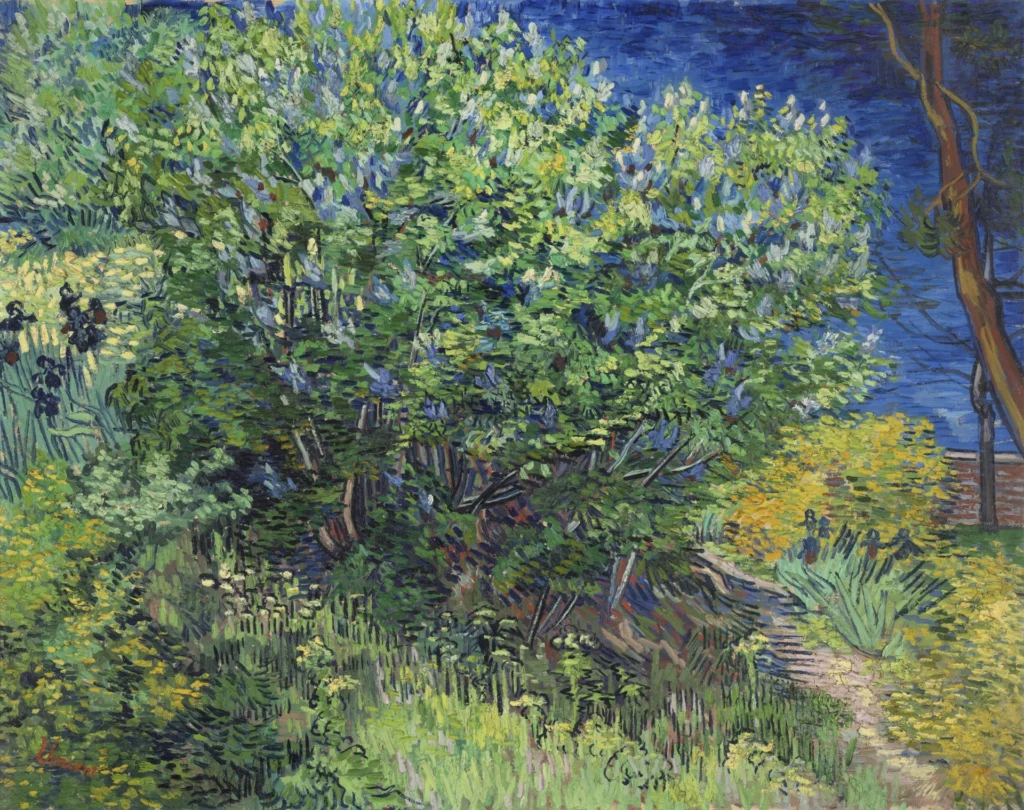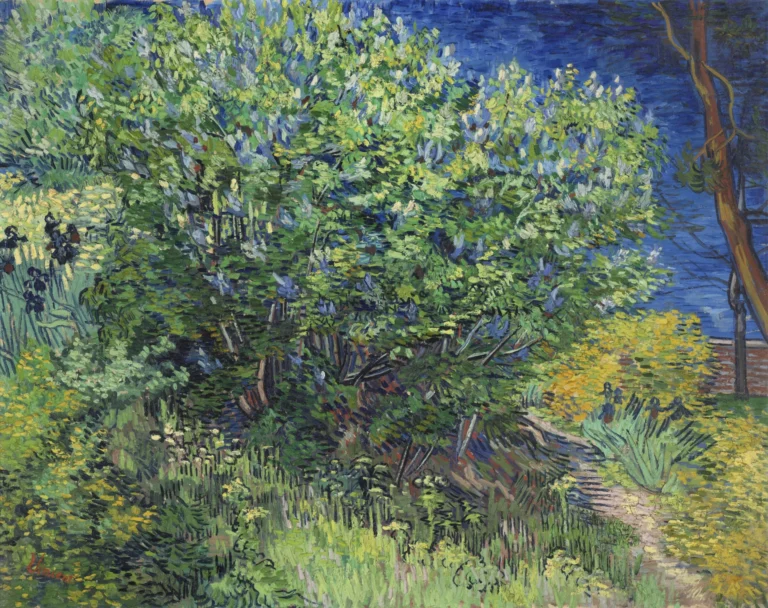Lilac Bush
Lilac Bush is a stunning exploration of color and texture, showcasing vibrant lilac blooms against a backdrop of swirling greens and blues. Painted in 1889, this artwork highlights Van Gogh’s ability to convey emotion through floral compositions. The lively brushstrokes and bold use of color evoke a sense of joy and tranquility, making it a beautiful representation of nature’s ephemeral beauty. The lilacs symbolize renewal and the fleeting nature of life, resonating with Van Gogh’s own struggles and aspirations for peace.
1889
About the Artwork
Created during his stay at the Saint-Paul-de-Mausole asylum in Saint-Rémy, Lilac Bush reflects Van Gogh’s deep appreciation for nature and his desire to find solace in the beauty around him. The lilac bush was likely inspired by the garden at the asylum, where he often painted to escape his emotional turmoil. This piece captures a moment of serenity amidst his chaotic inner world, illustrating his longing for stability and connection to the natural environment.
Did You Know
Did you know that Van Gogh painted Lilac Bush during a particularly challenging time in his life? This painting reflects his desire to find peace and beauty amidst his struggles, illustrating his deep connection to nature!
The lilac flowers symbolize renewal and hope, which aligns with Van Gogh’s own aspirations for personal growth and emotional stability during his time at the asylum.
Van Gogh created some of his best-known works during his final years in the asylum at Saint-Paul-de-Mausole in Saint-Rémy-de-Provence, including The Starry Night. Despite his struggles, he was incredibly prolific, producing roughly 150 paintings in a year.










